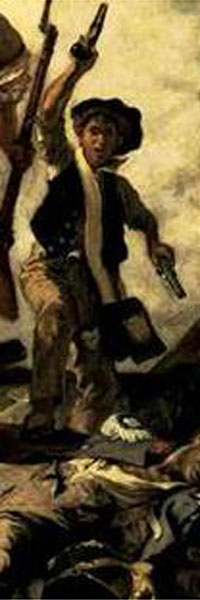Bastille Day: Where it comes from
by Aidan O'Donnell
Article published on the 2008-07-11 Latest update 2009-07-09 11:23 TU
Having spent most of the nineteenth century bouncing back and forth between republics and empires, France didn't actually decide that the 14 juillet would be the country's holiday - or more exactly, the Republic's holiday - until 1880. Ostensibly to commemorate the taking of the Bastille prison on 14 July 1789, it also included a nod to the Fête de la federation of 14 July 1790.
The 1790 celebrations had gathered around 300,000 French people, with representatives from all over France, to witness the king swear to respect the shiny new constitution of the French parliament. It didn't do him much good in the long run but the 1790 celebration of fraternity allowed more conservative towns in France to adopt the national holiday as a commemoration of the 1790 event rather than of the more radical 1789 chaos. This partly explains why the French are never really to going to take up the "Bastille Day" designation that's used outside France.
The first official celebration in 1880 saw the - somewhat premature - inauguration of the statue of Marianne on the Place de la République. The major Paris gardens played host to concerts. There were also alms for the poor and new flags for the army, which was reduced to penury after the defeat by Germany in 1871. The staunchly military nature of the national holiday today stems from the attempt to drum up some morale then.
During the 1970s nobody was really sure where to put the parade. It ran from Bastille to République one year, and in the opposite direction a few years later. It was also held at the military academy (École Militaire) before establishing itself as a strictly Champs Élysées event.








